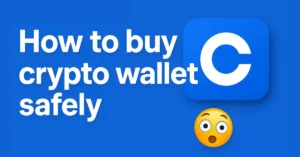benefits of blockchain in finance
Introduction
In recent years, blockchain technology has emerged as one of the most disruptive innovations in the financial sector. Originally developed to support cryptocurrencies like Bitcoin, blockchain is now being adopted across various areas of finance due to its ability to enhance transparency, security, and efficiency. At its core, blockchain is a decentralized digital ledger that records transactions in a secure, tamper-proof, and transparent manner. This technology eliminates the need for traditional intermediaries, reduces costs, and provides a more streamlined and trustworthy financial system.
As the global economy becomes increasingly digital, financial institutions are exploring blockchain to improve operations, serve customers better, and stay competitive. From faster payments to more secure data management, the benefits of blockchain in finance are substantial and far-reaching. In this blog, we’ll explore the key advantages that blockchain brings to the financial world—and why it’s considered a game-changer for the future of finance.
1. Enhanced Transparency
One of the most significant advantages of blockchain technology in finance is the high level of transparency it offers. Unlike traditional financial systems where transaction data is stored privately and controlled by centralized authorities, blockchain records are shared across a distributed network. This means every transaction is visible to all authorized participants and cannot be altered without consensus from the network.
Each transaction on the blockchain is time-stamped and permanently recorded, creating a clear, chronological trail of data. This makes it easier for financial institutions, regulators, and auditors to verify and track financial activity without relying on third parties. It also helps reduce the risk of accounting errors, manipulation, and fraud.
Transparency builds trust—both between businesses and their customers, and among financial institutions themselves. In an industry where trust is critical, blockchain provides a secure and verifiable way to conduct and monitor financial transactions, leading to improved accountability and stronger compliance with regulatory standards.
2. Improved Security
Security is a top priority in the financial industry, and blockchain technology significantly enhances it. Traditional financial systems are vulnerable to hacking, data breaches, and fraud due to their centralized structure. In contrast, blockchain operates on a decentralized network where data is stored across multiple nodes. This makes it extremely difficult for any single point of failure to compromise the entire system.
Each block in a blockchain is linked to the previous one using cryptographic principles. Once data is added, it cannot be changed without altering all subsequent blocks—and gaining approval from the majority of the network. This immutability ensures that transaction records are secure and tamper-proof.
Additionally, blockchain uses advanced encryption methods to protect sensitive financial data. Users can control access through private keys, ensuring that only authorized individuals can initiate or view transactions. These features make blockchain a powerful tool in preventing fraud, unauthorized access, and cyberattacks in financial systems.
By strengthening the integrity of financial data and protecting it from manipulation, blockchain boosts confidence in digital financial operations and provides a more secure environment for all users.
3. Faster Transactions
One of the most practical benefits of blockchain in finance is its ability to speed up transactions. Traditional financial systems often involve multiple intermediaries—such as banks, clearinghouses, and payment processors—that can slow down the process. In many cases, especially with cross-border payments, transactions can take several days to settle.
Blockchain eliminates the need for these intermediaries by enabling peer-to-peer transactions on a decentralized network. This allows funds and financial data to be transferred directly between parties in real time or within minutes, regardless of geographical location. Since all transactions are recorded and verified on the blockchain instantly, delays caused by manual processing or bank operating hours are removed.
This speed is especially valuable for businesses that require timely payments, such as those in international trade, supply chains, or financial services. It also benefits individuals by providing quicker access to their funds without waiting for traditional banking processes.
By reducing the time it takes to complete transactions, blockchain improves the overall efficiency of financial systems and creates a smoother experience for both institutions and users.
4. Cost Efficiency
Blockchain technology can significantly reduce the cost of financial operations. Traditional financial systems often rely on a complex network of intermediaries, such as banks, brokers, and clearinghouses, all of which charge fees for their services. These added layers not only slow down processes but also increase the overall cost of transactions.
By enabling direct peer-to-peer transactions, blockchain eliminates the need for many of these third parties. This streamlines operations and lowers associated costs. For example, in cross-border payments, blockchain removes the need for currency conversions and multiple banking intermediaries, reducing transaction fees and improving settlement speed.
Moreover, blockchain automates many administrative tasks—such as record-keeping, reconciliation, and compliance—through smart contracts and real-time data sharing. This reduces labor costs, minimizes human error, and improves operational efficiency.
For financial institutions, startups, and even individual users, these savings can be substantial. Blockchain not only helps lower operational costs but also creates opportunities for offering more affordable and accessible financial services to a wider audience.
5. Better Accessibility and Inclusion
One of the most transformative aspects of blockchain in finance is its ability to increase accessibility and promote financial inclusion. In many parts of the world, millions of people remain unbanked or underbanked due to lack of access to traditional financial institutions, strict identification requirements, or high service fees.
Blockchain removes many of these barriers by offering decentralized financial services (commonly known as DeFi) that anyone with an internet connection can access. Through blockchain-based platforms, individuals can open digital wallets, send and receive payments, apply for loans, or invest—without needing a traditional bank account or credit history.
This is especially impactful in developing countries, where access to banks and formal financial infrastructure is limited. Blockchain can empower people to participate in the global economy, protect their assets, and build financial stability using only a smartphone.
Additionally, blockchain supports faster and cheaper remittances, helping migrant workers send money back home more efficiently. This not only saves money for families but also contributes to economic growth in low-income regions.
By breaking down traditional barriers, blockchain is creating a more inclusive financial system that serves a broader and more diverse population.
6. Smart Contracts and Automation
Blockchain technology introduces a powerful innovation to the financial world: smart contracts. These are self-executing contracts with the terms of the agreement directly written into code. Once predetermined conditions are met, the contract automatically triggers the agreed-upon actions—such as transferring funds or issuing a payment.
Smart contracts eliminate the need for intermediaries like lawyers, brokers, or banks to enforce agreements. This not only saves time and money but also reduces the risk of human error and manipulation. In finance, smart contracts are being used to streamline processes like loan approvals, insurance claims, trade settlements, and more.
For example, in lending, a smart contract can automatically release loan funds once the borrower meets specific conditions, such as providing collateral or completing identity verification. In insurance, claims can be processed and paid instantly if the required conditions—like proof of an event—are digitally verified.
By automating complex transactions, smart contracts increase efficiency, improve accuracy, and create more reliable financial interactions. They also enhance transparency and trust, as all parties can view the contract terms on the blockchain and be confident they will be executed exactly as written.
7. Real-Time Settlement and Clearing
In traditional finance, settlement and clearing processes—especially in securities trading—can take several days to complete. These delays are caused by the involvement of multiple intermediaries, manual reconciliation, and time-zone differences. During this period, both parties are exposed to certain risks, including market fluctuations and counterparty defaults.
Blockchain technology offers a solution by enabling real-time settlement and clearing. Because transactions on a blockchain are verified and recorded instantly across a distributed ledger, assets can be transferred and settled almost immediately. This eliminates the need for third-party verification and reduces settlement times from days to minutes—or even seconds.
Faster settlement reduces counterparty risk and enhances liquidity, which is especially important for financial markets that rely on speed and precision. It also leads to lower operational costs, as fewer resources are required to manage post-trade processes.
Financial institutions, stock exchanges, and payment providers are increasingly exploring blockchain-based systems to modernize their clearing and settlement infrastructure. By enabling instant, transparent, and secure transaction processing, blockchain is paving the way for a more efficient and responsive financial system.
8. Regulatory Compliance and Audit Trails
Meeting regulatory requirements is a major challenge for financial institutions. Traditional systems often rely on fragmented data sources and manual processes to maintain records, report transactions, and conduct audits—making compliance time-consuming, error-prone, and expensive.
Blockchain simplifies this by providing a secure, transparent, and tamper-proof ledger of all transactions. Every entry is permanently recorded with a timestamp and cannot be altered without consensus from the network. This creates an automatic and reliable audit trail that regulators and auditors can access in real time.
For financial institutions, this means easier and faster compliance with legal and reporting obligations. It also reduces the risk of data manipulation, fraud, and regulatory breaches. In addition, blockchain can be programmed to automatically enforce compliance rules through smart contracts—for example, blocking a transaction that doesn’t meet certain regulatory standards.
By improving data integrity and offering real-time visibility into financial activities, blockchain not only strengthens trust with regulators but also enhances the overall accountability and transparency of financial operations.
9. Future Outlook
As blockchain continues to evolve, its role in reshaping the financial industry is expected to grow even further. While many institutions have already begun experimenting with blockchain-based solutions, full-scale adoption is still in progress. The future holds strong potential for broader integration across banking, investment, insurance, and regulatory sectors.
Emerging trends like Central Bank Digital Currencies (CBDCs), decentralized finance (DeFi), and tokenized assets are already pushing blockchain into the financial mainstream. These innovations promise to make financial systems more inclusive, efficient, and secure. In the years ahead, we may see a shift from traditional infrastructure to blockchain-powered platforms that offer real-time processing, improved global reach, and seamless interoperability between systems.
However, there are still challenges to address, including regulatory uncertainty, scalability issues, and the need for industry-wide standards. Collaboration between technology providers, financial institutions, and governments will be crucial in overcoming these hurdles.
Despite these obstacles, the direction is clear: blockchain is not just a temporary trend—it’s a foundational technology that is set to redefine how financial systems operate in the digital age.
Step-by-Step Guide: Why Blockchain is Better for You

If you’re wondering how blockchain actually benefits you—whether you’re an individual, a business owner, or a financial professional—here’s a step-by-step breakdown to help you understand its practical value:
Step 1: Know Where Your Money Goes
- Blockchain offers transparent records of all transactions. You can track where your money is going in real-time, reducing the chances of hidden fees, fraud, or unauthorized changes.
Step 2: Enjoy Faster Access to Your Funds
- No more waiting for “banking hours.” Blockchain allows transactions 24/7, including weekends and holidays. Whether you’re sending money across the world or receiving payment, the process is almost instant.
Step 3: Cut Down on Costs
- By removing middlemen like banks or payment processors, blockchain helps reduce fees. That means more money stays in your hands when you’re transferring funds, borrowing, or investing.
Step 4: Feel More Secure
- Each transaction is encrypted and recorded on multiple systems, making it nearly impossible to hack or manipulate. You’re in control of your financial data, not a centralized authority.
Step 5: Access Financial Services Without a Bank
- With blockchain, you don’t need a traditional bank account. Digital wallets and decentralized finance (DeFi) platforms allow you to borrow, lend, and invest—even if you’re unbanked or underbanked.
Step 6: Automate and Simplify Complex Tasks
- Smart contracts automate agreements like loan disbursements, insurance claims, or payments. This saves time and eliminates paperwork.
Step 7: Build Trust in Every Transaction
- Since blockchain records can’t be changed without agreement from the network, you can be confident that every transaction is accurate, permanent, and verifiable.
Final Thought
Whether you’re a freelancer receiving international payments, a startup managing cross-border transactions, or just someone tired of high banking fees—blockchain gives you a more transparent, efficient, and secure way to handle your finances.
Frequently Asked Questions (FAQs)
What is blockchain in simple words?
Blockchain is a digital ledger that records transactions in a secure and transparent way. It works like a shared notebook where every entry is permanent and visible to everyone in the network.
How is blockchain used in finance?
Blockchain is used to make financial transactions faster, safer, and cheaper. It helps with payments, loans, trading, smart contracts, and even sending money across borders without delays or high fees.
Why is blockchain more secure than traditional banking?
Blockchain stores data across many computers instead of just one place. Once a transaction is recorded, it can’t be changed or deleted. This makes it very hard for hackers to tamper with the data.
Can blockchain save money for businesses?
Yes, it reduces costs by removing middlemen (like banks or brokers) and automating tasks with smart contracts. This means fewer fees, less paperwork, and faster processing.
Is blockchain only for big banks or companies?
No. Anyone can use blockchain. Whether you’re a small business, freelancer, or someone without a bank account, blockchain offers tools that are accessible and easy to use.
What are smart contracts?
Smart contracts are self-executing programs stored on the blockchain. They run automatically when certain conditions are met—like sending payment after a delivery—without needing a third party.
Is blockchain safe for international transactions?
Yes, blockchain is great for sending money across countries. It’s fast, secure, and usually has lower fees compared to traditional bank transfers or remittance services.
Does blockchain help with financial transparency?
Absolutely. Every transaction on a blockchain is recorded and can be tracked. This helps reduce fraud and builds trust among users.
Can blockchain work with regular banking systems?
Yes. Many banks and financial institutions are already testing or using blockchain technology to improve their services and offer better digital solutions.
Is blockchain the future of finance?
It’s very likely. Blockchain is already changing how money moves and how financial services are delivered. As technology improves and regulations catch up, it could become a core part of global finance.
Conclusion
Blockchain is changing the way we handle money and financial services. It’s faster, more secure, and helps save costs by removing the middlemen. Whether you’re sending money, making payments, or running a business, blockchain gives you more control, transparency, and access. As this technology grows, it’s clear that blockchain isn’t just a trend—it’s a smarter, better way to manage finance.
Bonus Points

- Reduces Human Error: Blockchain automates processes, which minimizes mistakes caused by manual data entry or paperwork.
- Supports Micropayments: Blockchain makes it easier to send or receive very small amounts of money—perfect for freelancers, content creators, and digital services.
- Eco-Friendly Blockchains Are Emerging: New blockchain networks are being designed to use less energy, making them more sustainable than older systems.
- Ownership and Identity Control: With blockchain, users have full control over their digital identities and personal financial data.
- Easy Integration with Fintech Apps: Many modern finance apps are now blockchain-compatible, offering smoother and more secure services.
- Improves Customer Trust: Transparent records and reduced fraud lead to better relationships between companies and their customers.
- Innovative Investment Opportunities: Tokenized assets and decentralized finance (DeFi) platforms open new doors for earning and investing outside of traditional banks.
Also read
- What is a Crypto Wallet and How Does It Work? – Coinsify
- 10 Crypto Terms Every Beginner Must Know – Coinsify
- What is Blockchain Technology – Complete Guide – Coinsify
- How to Buy Crypto Safely in 2025 – Complete Guide – Coinsify
- Bitcoin vs Ethereum: Key Differences Explained – Complete Guide
- Ultimate Blockchain Glossary: Learn Blockchain Terms Easily
- How to Buy Bitcoin Safely (Complete Beginner’s Guide)
- Top 10 Crypto Wallets for Beginners (2025 Edition)
- What is Cryptocurrency? A Beginner-Friendly Guide (2025)






